A JOURNEY TO SANTIAGO - SAINT JACQUES DE COMPOSTELLE A PILGRIM’S PROGRESS
Lynne Burney Yashoda
Part 3 - Espagne 2002 - Anglais / Français (version française plus bas)
This story begins just before Easter in the year 2000. It spans 4 years and 3 seasons. As I tell the story I will pause to ask you, the reader or listener, a question which you may choose to answer or share it with others.
You will notice that I refer to this journey alternatively as le chemin de Saint Jacques, the Way of Saint James, El Camino or sometimes just as Compostella.
Episode 18 : Polarities
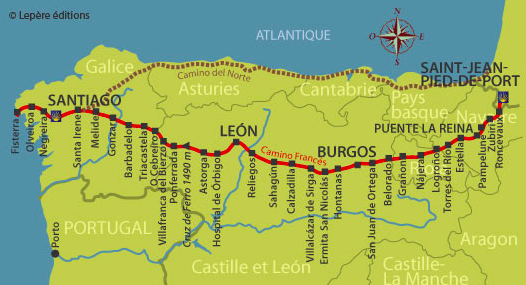 Spain was in economic recession in 2002. Buildings that had had such high hopes stood in disarray: their roofs missing; their walls still not plastered; cables dangled listlessly; rubble clustered; potholes gaped in unfinished footpaths. While the utterly demoralizing experience of walking through the industrial wastelands of Paris was not part of my brain’s landscape at the time we were walking out of Pamplona or into Burgos or Leon, the encounter with the unattractive outskirts of each of these major Spanish towns was a disheartening affair.
Spain was in economic recession in 2002. Buildings that had had such high hopes stood in disarray: their roofs missing; their walls still not plastered; cables dangled listlessly; rubble clustered; potholes gaped in unfinished footpaths. While the utterly demoralizing experience of walking through the industrial wastelands of Paris was not part of my brain’s landscape at the time we were walking out of Pamplona or into Burgos or Leon, the encounter with the unattractive outskirts of each of these major Spanish towns was a disheartening affair.
Invariably there was a 2 to 3-hour hard slog in a straight line over concrete, around potholes and between billboards. Without fail the bag on my back mysteriously gained weight and my eyes tired from remaining glued to the ground to avoid tripping on something left over from a building site.
We had made a vow back in April 2000 to walk all the way to Santiago and by August 2002 we thought of ourselves as bone fide pilgrims so it never crossed our minds to take a bus into the center of town.
Question:
Are there promises that you have made to yourself that have caused you both joy and regret?
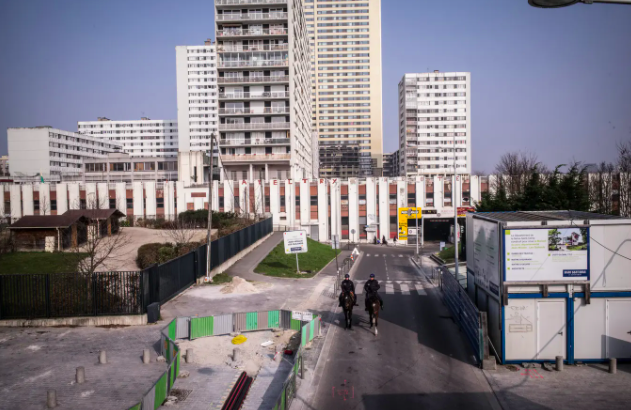 Walking into a town through its unromantic outskirts felt like a punishing prelude to the pleasure I anticipated experiencing on discovery of the diamonds at its heart.
Walking into a town through its unromantic outskirts felt like a punishing prelude to the pleasure I anticipated experiencing on discovery of the diamonds at its heart.
For me, having grown up in the New World, it was always exciting to travel back in time to the Old World of Europe. I loved to imagine how life used to be; to dream up stories; to take pictures from quaint hotels in narrow streets of thick stone walls; to be comfortable, well fed and delighted with history.
We decided to stop in Burgos for a day of R&R. The old town met all the criteria!
We got a room with a view over the cathedral plaza. That night lying in the luxury of a king size bed covered with dazzling white sheets, with windows flung wide open I could watch the way the light of the moon – or maybe it was a street lamp - caught the carved stone of the central portal: the door of forgiveness. I could begin my dreaming. It was blissful. The night slipped away.
The early morning light picked up the stone walls of the cathedral again and a cool breeze infiltrated our bedroom through the window that had remained open all night. I lay there, in bed, fully appreciating our extraordinary good fortune, to have a room with such a magnificent view of the diamond in the heart of Burgos: its cathedral.
The breakfast on offer was a sumptuous affair that catered for all European palates. We had ours served in the room. I chose fresh peaches from Spain and yogurt from Greece; croissants à la French and tea from my backpack.
The bathroom matched the whiteness of the sheets and the spaciousness of the bedroom. I took a leisurely shower and then sat on the edge of the bed wrapped up in a fleecy white giant towel with matching hair turban, watching a few people starting to gather outside the entrance to the cathedral. They were the keen ones who got to places of interest early so as to enjoy the magic of the morning light and the silence before pack invasions of day trippers began ripping the peace apart with their chatter and boisterous enthusiasm.
We joined the growing crowds a little later after breakfast. We wandered idly along the narrow cobble stoned streets of the old town around the cathedral until we came across an elegant looking tea house. We pushed open the well- polished wooden door with stained glass inset and stepped inside full of anticipation.
The waiter had all the panache of a Parisian garçon in a Left Bank café but I can still see the dumbfounded look on his face when I asked him what kind of tea he had.
 “Bah - tea,” he replied.
“Bah - tea,” he replied.
“Yes, but what kind?” I insisted with a smile.
“Bah - tea is tea,” he retorted without a smile.
“OK, I’ll have tea then,” I agreed, wondering how come a waiter in a posh tea house didn’t know about the infinitive varieties of black and green teas from all over Asia. But this was a coffee drinking nation. Spain had conquered South America and inherited the coffee bean not the tea leaf.
I had discovered long ago that the best way to disguise poor quality black tea was to add milk or lemon to it so in Spain I grew very adept at requesting my morning tea “con leche” (with milk). I grew even more skilled after one waiter delivered a teapot full of hot milk with a tea bag on the side to my table.
 Seriously!
Seriously!
After that when I ordered tea, I waited until it was set down on the table, feigned forgetfulness, raised my finger, eyebrow and voice and said with a note of regret in my accent, “con leche”? The ploy ensured I would get tea in a pot and milk to add to it. It did not endear me to harassed waiters but it did get me drinkable tea across northern Spain.
What I did get in one or two places, thanks again to a Spanish colonial past, was divine hot chocolate.
I stood in yet another bar on yet another early morning alongside a few other sunrise walkers. The café was in a plaza opposite a 16th century church somewhere not long after Burgos. The bar was famous for its generous servings of hot chocolate. The church couldn’t even begin to compete for my attention! I leaned over the bar, both hands clasped around a deep cup full of thick, rich and barely liquid chocolate. The cup warmed my hands. The chocolate slid smoothly and deliciously down my gullet in small sips. It fueled my legs for the next 10 kilometers.
Meanwhile back in Burgos, I was foolishly drinking tea, not hot chocolate.
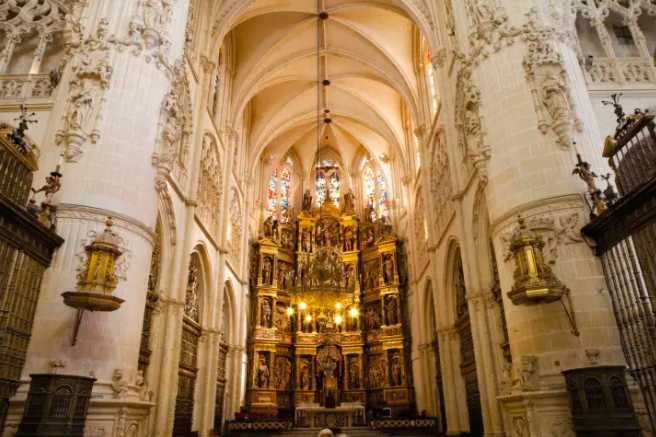 We left the tea house, climbed the steps and entered the cathedral through its southern door. It was immense. I sat down, alone among the many visitors, and let the coolness of its stone walls soothe my soul. I felt the elevation of its gothic architecture lift me upwards. My muscles relaxed, my sense of space broadened, all thoughts of what I had seen, done, ate, drank and what I wanted to see, do, eat, drink next diminished in size; my whole being softened into a feeling of intense wellbeing. I lost all sense of chronological time. I had no idea how long this peaceful immersion lasted but I knew Chronos had returned when thoughts of lunch and what next moved me to stand and continue my visit of the cathedral. I thought how wonderful it would be to prolong those spontaneous moments of unexpected bliss and then I also thought I might never get lunch. My mind was true to its yoyo nature bouncing up and down between the sublime and the commonplace.
We left the tea house, climbed the steps and entered the cathedral through its southern door. It was immense. I sat down, alone among the many visitors, and let the coolness of its stone walls soothe my soul. I felt the elevation of its gothic architecture lift me upwards. My muscles relaxed, my sense of space broadened, all thoughts of what I had seen, done, ate, drank and what I wanted to see, do, eat, drink next diminished in size; my whole being softened into a feeling of intense wellbeing. I lost all sense of chronological time. I had no idea how long this peaceful immersion lasted but I knew Chronos had returned when thoughts of lunch and what next moved me to stand and continue my visit of the cathedral. I thought how wonderful it would be to prolong those spontaneous moments of unexpected bliss and then I also thought I might never get lunch. My mind was true to its yoyo nature bouncing up and down between the sublime and the commonplace.
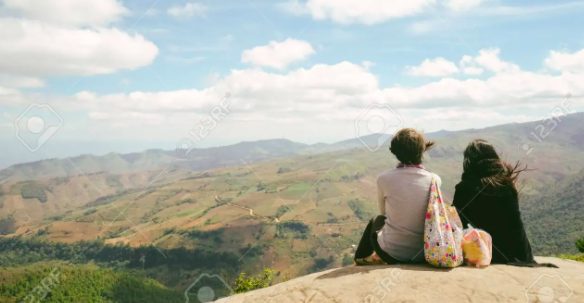
Questions:
When, where and with whom have you experienced moments of intense well-being?
How do these moments get interrupted?
Even though I was happy to get back on the road again, it was hard to say goodbye to the comfort of our hotel room and the beauty of the old town with the cathedral in its center. It was easy to adapt to comfort; tiresome to go back to roughing it. But, in fact, it was oscillating between the two that was the most difficult for me. Once I got used to being on the road, I didn’t miss the luxury of a thick mattress or fleecy white bath towels but I never walked away from them without a twinge or a sigh of regret.
I gradually trained my mind not to hook onto thoughts of past or anticipated material comforts. I continued to enjoy a good cup of quality tea and to revel in the taste of a divine hot chocolate but I didn’t fret when they weren’t available. I simply learnt not to miss them. In fact, the real luxury turned out to be a balanced state of mind regardless of circumstances.
Questions:
How do you relate to loss of comfort?
What are you most attached to?
What have you taught yourself to let go of?
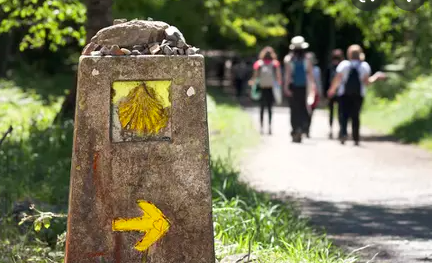 From Burgos we walked to Castro Jeriz.
From Burgos we walked to Castro Jeriz.
We were preparing to cross the Meseta. We had to avoid finding ourselves in the middle of a desert like landscape exposed to the torrid heat of a midday sun. We also had concerns about thunder storms and the threat of lightning. We had heard tales about pilgrims who had been struck by lightning while crossing the Meseta. I assumed they had died from the experience but I had never wanted to pursue that line of enquiry for fear of provoking too much anxiety within me. I thought back to the charred remains of a horse I had seen lying in an open field the summer before. It made me shudder instinctively imagining what a bolt of lightning might do to my own body. From the time of the dead horse onwards, I consciously removed all jewelry from my body before walking across exposed terrain in thundery weather conditions. Crossing the Meseta was a big deal in our minds. We were high up on a plateau and exposed to all the elements. We would be vulnerable if the weather turned bad.
We slammed the door of the hostel in Castro Jeriz before sunrise on the morning of September 3rd, 2002 and stepped outside into pitch black. There wasn’t a soul in sight. We realized in an instant that we didn’t have a clue which way to turn: left or right? In all our worrying about storms and blistering heat we hadn’t given a thought to how dark it would be in the little narrow street of our hostel before the first glimmer of dawn. We couldn’t see the very familiar signpost showing the rays of a sunlike scallop shell on a blue background with an arrow pointing the way. We felt really stupid. We could see lightning flashing in the direction we were headed. The hostel door self-locked so no way back. We felt worried as well as stupid. Richard fumbled around in his bag for his flashlight. We needed a flashlight to find the flashlight. Stupidity plus!
Another pilgrim left the hostel and headed authoritatively to his left. We feigned last minute adjustments to the backpack and quickly scuttled after him. We said nothing to each other about our mutual embarrassment of being mentally prepared for death by lightning but so ill prepared for being lost in darkness!
Worry took over from feelings of stupidity as first light showed a deeply troubled sky. Thunder rumbled and reached for a crescendo as we got nearer to the top of the-to-be expected climb out of a town. The lightning increased in frequency and brilliance. It was promising to be a display of biblical proportions. It was frightening and staggeringly beautiful. Great jagged streaks of purple-edged white light rent the remains of the night sky apart: slashing, crackling, irregular, oblique and terrifyingly powerful.
I was truly frightened of what we were walking towards. We tipped over the edge of the upward climb and onto the wide-open spaces of the plateau. I leaned into my fear and a raging wind. Up there, on the plateau, we were tiny figures under the vastitude of a low sky, booming with electrical fury. There was nowhere to hide. I imagined that death would come in an instant if it came as a bolt of lightning. We walked with deliberation: one foot followed the other without pause. My breath was even and focused; holding fear at bay. I prayed as I walked.
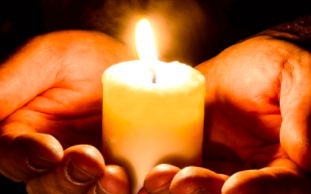 Questions:
Questions:
Do you pray?
When do you pray?
Why do you pray?
When the storm’s energy was fully spent and without rain, the day settled into its early morning gracious self. The sun received our relieved faces and our gratitude with celestial indifference as it rose slowly towards midday, gaining infallibly in ferocity.
I felt genuinely relieved to have survived the storm without being fried alive or even getting wet but we still had our destination to reach and there was virtually no shade available anywhere. I hunched my shoulders, pulled my hat down low over my eyes and bent my head forward, chin tucked in. They were the only responses I had to a sun that, as it grew in strength, beat us mercilessly with its relentless rays. We trudged on towards our next stop in Fromista, not even stopping to sip tea.
From Fromista we moved on to Carrion de Los Condes, followed by Calzadilla de la Cueza and then Sahagun.
Ah Sahagun..............
Postscriptum:
I chose to call this episode “Polarities” because walking the Way in Spain 2002 flung me from one extreme to another: from the sacred beauty of Burgos Cathedral and the divine comfort of a king size bed to exposure to life threatening elements on the Meseta; from the soul-destroying industrial wastelands around major towns to the picturesque diamonds in their old centers. The intensity of one extreme highlighted the experience of its opposite. Life was not bland on the road to Saint James! The choices of where to stay were all ours but so much of what actually happened to us seemed beyond our control.
The storm up on the plateau had filled me with awe and made me feel small and vulnerable. I understood why human beings had clustered and built shelters together; why people knelt in reverence to a power they hoped would exert its will, in their favor.

Questions:
Think about the polarities in your own life.
How do they operate in your life?
Does one pole highlight the other?
Do you reject one and seek to develop the other?
Does anything change when you embrace both poles?
Episode 18 : Polarités
Le souvenir de l’expérience démoralisante que fut notre marche à travers les friches industrielles de Paris n’était pas encore bien enregistrée dans mon cerveau au moment où nous avons eu à quitter Pampelune ou encore Burgos ou Léon.
Mais en fait, chaque fois que nous parvenions aux abords d’une grande ville, notamment en Espagne, le trajet impliquait une fastidieuse avancée de 2 à 3 heures en ligne droite entre béton et panneaux d’affichage. Je ne me souviens pas que cela fut le cas en France, à l’exception de la capitale.
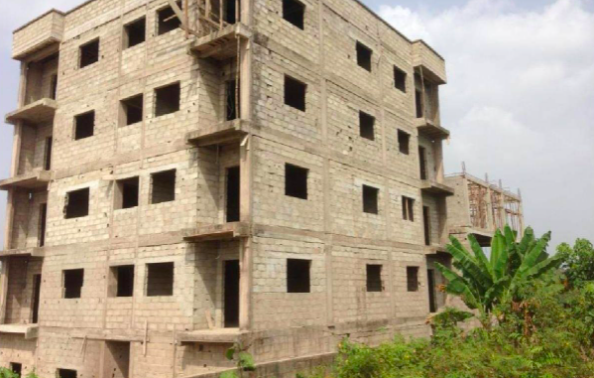
En 2002 l’Espagne était en récession. Les bâtiments, hier porteurs de tant d’espoirs figuraient comme autant de chantiers en plein désarroi avec leurs toits inachevés, leurs murs même pas plâtrés, leurs câbles suspendus passivement, apathiques, leurs monceaux de détritus regroupés en désordre. Dans ces moments, mon sac à dos devenait invariablement plus lourd et mes yeux fatigués de devoir prendre garde aux nids-de-poules.
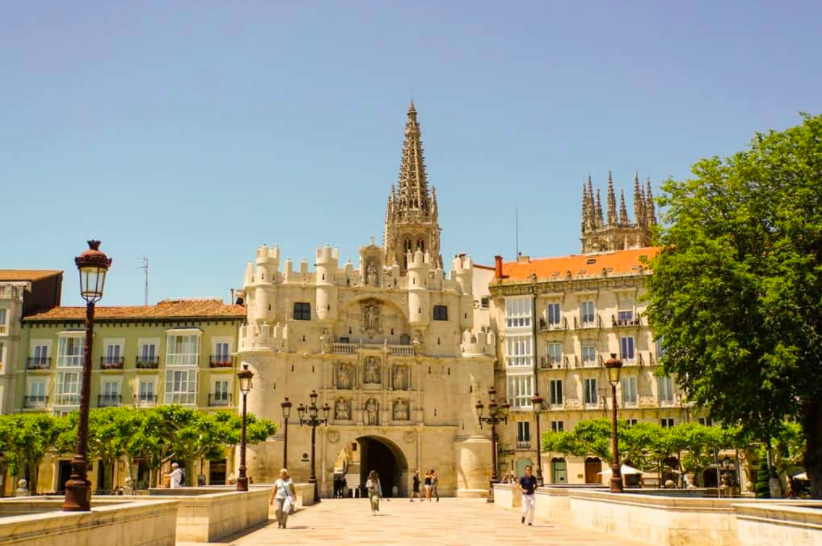
Quelle était donc la carotte au bout du bâton ? Réponse, les joyaux qui, tels des diamants, constituent le cœur ancien des villes. Ces lieux pour lesquels un voyageur du Nouveau Monde remonte le temps, part à la découverte de l’Ancien Monde pour imaginer comment la vie était autre fois. Pour inventer des histoires, prendre des photos d’hôtels pittoresques dans les rues étroites aux épais murs de pierre. Pour se sentir à l’aise, bien nourris et ravis de vivre avec l’Histoire.
Marcher le Camino confronte le pèlerin aux polarités du monde dans lequel il vit: pour trouver le diamant au centre, il doit marcher à travers les friches.
Question:
Quelles polarités votre vie vous demande-t-elle de gérer ?
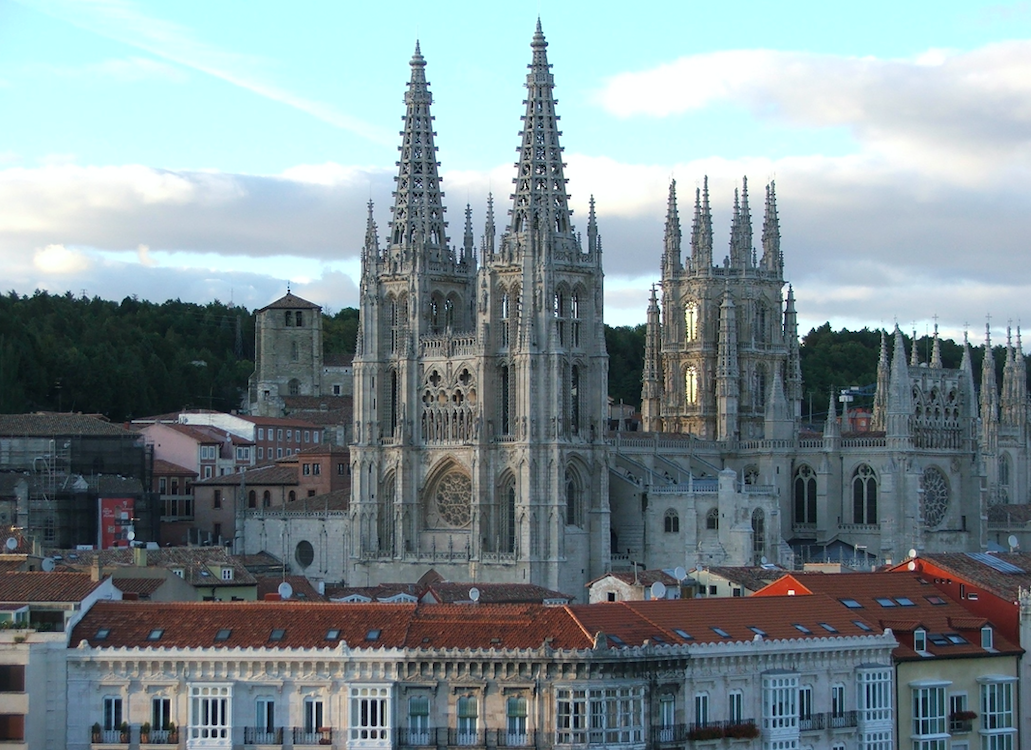 Nous avions décidé de nous arrêter une journée à Burgos. Nous avions une chambre avec vue sur la place de la cathédrale. Allongée sur le lit, fenêtres grandes ouvertes, je pouvais regarder la façon dont la lumière du soleil capturée la pierre sculptée du portail central: la Porte du Pardon….C’était le bonheur ! Tout comme le lit, la salle de bain et le petit déjeuner.
Nous avions décidé de nous arrêter une journée à Burgos. Nous avions une chambre avec vue sur la place de la cathédrale. Allongée sur le lit, fenêtres grandes ouvertes, je pouvais regarder la façon dont la lumière du soleil capturée la pierre sculptée du portail central: la Porte du Pardon….C’était le bonheur ! Tout comme le lit, la salle de bain et le petit déjeuner.
Nous avons erré parmi les pierres pavées de la vieille ville autour de la cathédrale et avons trouvé une élégante maison de thé. Le serveur avait tout le panache d’un garçon de café parisien de la rive gauche. Je vois encore regard abasourdi quand je lui ai demandé quel genre de thé il avait.
— Ben …du thé, répondit-il.
« Oui, mais quel genre de thé ? » ai-je insisté avec le sourire
« Ben - c’est du thé comme le thé est », a-t-il rétorqué sans sourire.
« Ok, je vais prendre le thé alors, ai-je convenu en me demandant comment se faisait-il qu’un serveur d’une maison de thé chic ne savait rien de l’infinie variétés des thés noirs et verts de toute l’Asie. Mais j’étais face à une nation de buveurs de café. L’Espagne avait conquis l’Amérique du Sud et hérité du grain de café et non de la feuille de thé.
J’avais découvert, il y a bien longtemps, que la meilleure façon de déguiser un thé noir de piètre qualité était de lui ajouter du lait ou du citron.
En Espagne, je suis devenu très habile à demander mon thé du matin « con leche » (avec du lait). Ma progression fut étincelante après qu’un serveur m’ait apporté une théière pleine de lait chaud avec un sachet de thé sur le côté de la table. Depuis, quand je commande du thé, j’attends qu’il soit posé sur la table, feins l’oubli, lève le doigt, le sourcil et interroge « con leche ? » Ainsi, je m’assurais d’obtenir du thé dans une théière avec du lait à lui ajouter. Ma ruse ne m’a pas fait d’amis au sein de la confrérie des serveurs harcelés, mais j’ai eu dans les cafés espagnols un thé presque potable.
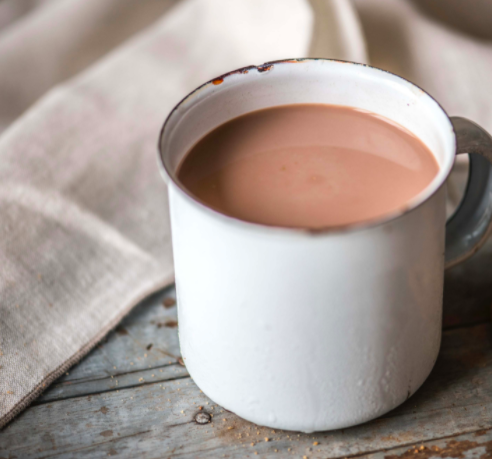
Ce que j’ai obtenu dans un ou deux endroits, grâce encore au passé colonial espagnol, c’était un divin chocolat chaud. Je me souviens d’un autre bar, tôt le matin, en face d’une autre église historique dans une ville dont je ne me souviens pas du nom. Le chocolat chaud était épais et riche dans sa tasse profonde. Boire, c’était alimenter le moteur pendant les 10 kilomètres suivants - au moins. Mon cerveau doit être câblé pour sélectionner les souvenirs qui portent un plaisir sensoriel intense.
Question :
Votre cerveau est-il câblé de même ?
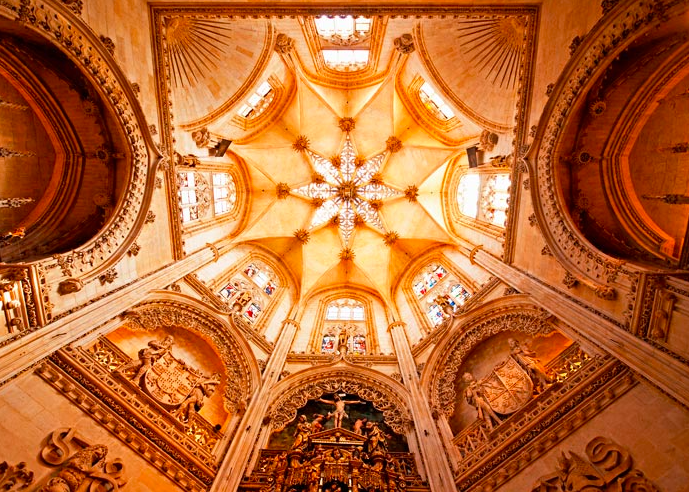 Burgos. Sa magnifique cathédrale gothique.
Burgos. Sa magnifique cathédrale gothique.
Je me suis assise à l’intérieur de son immense structure laissant la fraîcheur de ses murs de pierre apaiser mon âme. Je me suis laissé envahir par le sentiment d’élévation que procurait son architecture gothique. Mes muscles se détendaient, mon sens de l’espace s’élargissait, mes pensées allaient s’adoucissant et diminuaient en taille; un sentiment de bien-être intense envahit tout mon être. Une joie pure immaculée, éternelle, intacte. J’aurais aimé que ça dure plus longtemps.
J’ai quitté à contrecœur le confort, la beauté et les paradoxes de Burgos.
Le Camino a continué à fournir des leçons de vie. Il était facile de s’adapter au confort et tellement plus difficile de le quitter. Balancer entre polarités était un exercice d’humeur. Confort en hausse, inconfort en baisse.. C’était un exercice mental, finalement fatigant physiquement. Cela a changé l’année suivante quand j’étais prête à renoncer aux «petits plaisirs ». J’ai remarqué qu’avec le temps l’esprit pouvait être discipliné et l’envie pour tout goût de luxe a pratiquement disparu. J’ai trouvé l’équilibre mental qui était et demeure le vrai salut de l’âme.

Questions:
Que remarquez-vous de votre propre propension à osciller entre mouvements d’humeur ?
Quels désirs font le plus de ravages dans votre vie?
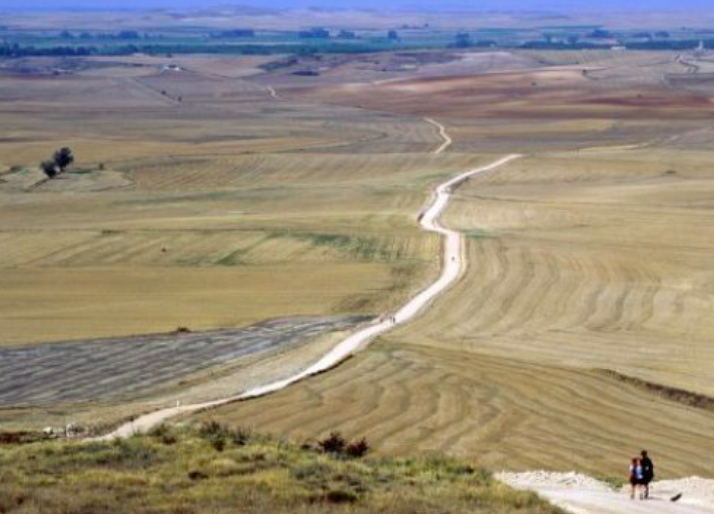
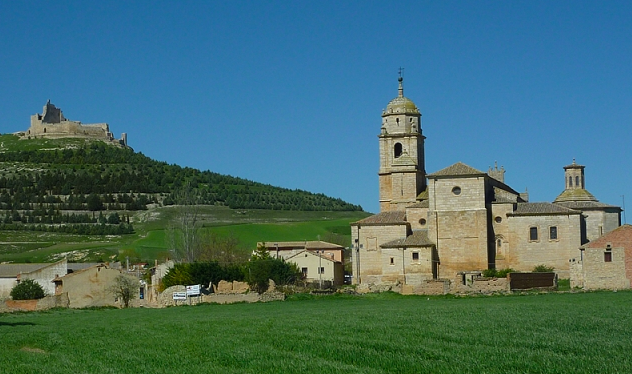 De Burgos, nous sommes allés à Castro Jeriz. Nous nous préparions mentalement à traverser la Meseta, ce qui signifiait éviter de nous retrouver au milieu d’un paysage désertique exposé à la chaleur torride d’un soleil de midi. Nous étions également préoccupés par les coups de tonnerre et la menace de foudre. Des histoires circulaient dans les auberges sur des pèlerins frappés par la foudre, mais je n’ai jamais vu qu’un cheval mort. Pour autant, je me rassurais en enlevant le moindre bijoux avant de m’engager en terrain exposé. Nous étions sur un plateau, il y avait donc de multiples occasions pour un possible coup de vent orageux avec averses et grêle.
De Burgos, nous sommes allés à Castro Jeriz. Nous nous préparions mentalement à traverser la Meseta, ce qui signifiait éviter de nous retrouver au milieu d’un paysage désertique exposé à la chaleur torride d’un soleil de midi. Nous étions également préoccupés par les coups de tonnerre et la menace de foudre. Des histoires circulaient dans les auberges sur des pèlerins frappés par la foudre, mais je n’ai jamais vu qu’un cheval mort. Pour autant, je me rassurais en enlevant le moindre bijoux avant de m’engager en terrain exposé. Nous étions sur un plateau, il y avait donc de multiples occasions pour un possible coup de vent orageux avec averses et grêle.
Nous avons claqué la porte de l’auberge à Castro Jeriz très tôt le matin du 3 Septembre 2002 et sommes sortis dans le noir. Nous avons alors réalisé que nous n’avions pas la moindre idée d’où se tourner: prendre à gauche ou à droite? Nous ne pouvions pas voir le panneau désormais familier où , sur un fond bleu, des rayons de soleil irradient une coquille de pétoncle et pointe la direction du Chemin. On s’est senti vraiment stupides. Nous pouvions voir la foudre comme clignoter dans la direction où nous pensions devoir aller. La porte de l’auberge s’auto-verrouillant, il n’y avait pas de retour possible. Nous nous sommes sentis inquiets autant que stupides. Richard fouilla dans son sac pour une lampe. On avait besoin d’une lampe pour trouver la lampe. Une stupidité de plus. Dans l’intervalle un autre pèlerin avait quitté l’auberge, se dirigeant avec autorité sur sa gauche. Nous avons feint des ajustements de dernière minute au sac à dos et rapidement emboités le pas. On n’a pas fait la même erreur deux fois. Nous en avons fait d’autres, mais pas celle-là.
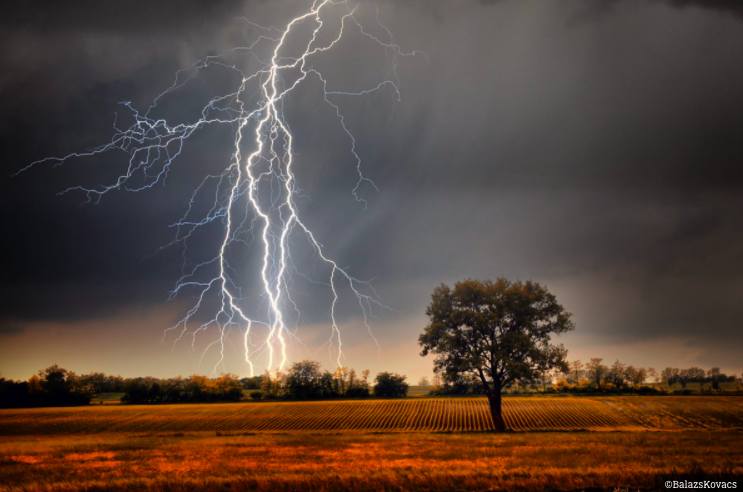
L’inquiétude a pris le dessus sur la stupidité aux premières lumières du jour, laissant entrevoir un ciel profondément troublé. Le tonnerre grondait allant crescendo alors que nous nous approchions du sommet, un sentier classique pour quitter une ville. La foudre a augmenté en fréquence et luminosité. Cela promettait un spectacle de proportions bibliques. C’était effrayant et incroyablement beau.
Polarités à nouveau. Il n’est tout simplement pas possible d’avoir l’un sans l’autre. Et pour reconnaître la pleine puissance d’une polarité, vous devez avoir conscience de l’intensité à l’extrémité des deux pôles. Pour être « entier », vous devez regarder au plus profond la beauté au cœur même de votre terreur, l’horreur qui est centrale, fondamentale, au centre de votre attraction et de connaître l’Amour qui guérit toute dualité.
Eh bien, il s’agissait en l’occurrence d’une situation ou soit se mouiller, soit d’être frappé par la foudre ou les deux.
Sur le plateau, nous étions comme de minuscules figurines sous l’immensité d’un ciel bas, en plein déchainement et fureur électrique. Il n’y avait nulle part où se cacher. J’imaginais que la mort viendrait en un instant si elle devait venir d’un éclair. Nous avons marché avec détermination, avançant un pied derrière l’autre sans faire de pause. Mon souffle était égal et concentré, tenant la peur à distance.
Et quand l’énergie de l’orage se trouva consumée, la matinée s’installa avec toute sa bonne grâce. Nous pouvions tourner nos visages en direction d’un soleil tout sourire- avant qu’il ne montre aussi son côté féroce. Nous voulions arriver à notre prochaine destination avant cela. Nous n’avons donc pas passé de temps à siroter un thé ce matin-là.
Nous exposer aux éléments de cette façon était notre choix. Nous étions en pèlerinage - un voyage de découverte de soi - un retour à l’essence de soi.
Cette tempête sur le plateau m’a rempli de peur et m’a fait sentir petite et vulnérable. J’ai compris pourquoi les êtres humains s’étaient regroupés pour construire ensemble des abris et pourquoi ils s’étaient agenouillés, respectueux face à la toute puissance.
Question:
Quelles histoires avez-vous à partager sur les grondements de tonnerre, sauvages et imprévisibles manifestations de la nature ?
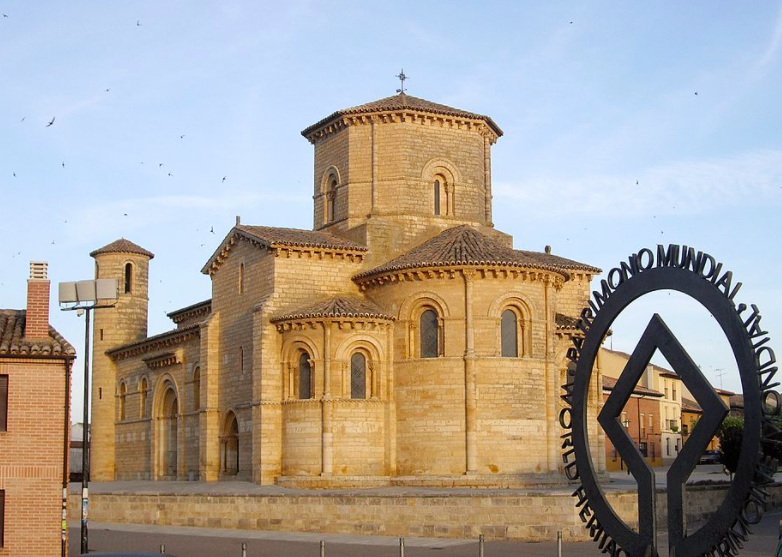 Ainsi sommes-nous arrivés à Fromista.
Ainsi sommes-nous arrivés à Fromista.
Et de là à Carrion de Los Condes, suivie par Calzadilla de la Cueza, puis Sahagun.
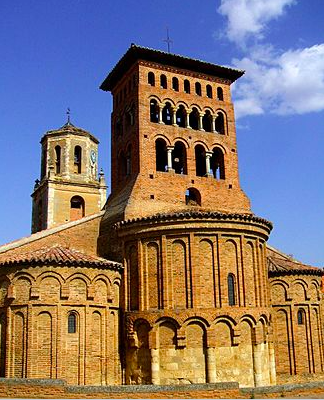 Ah Sahagun......
Ah Sahagun......



